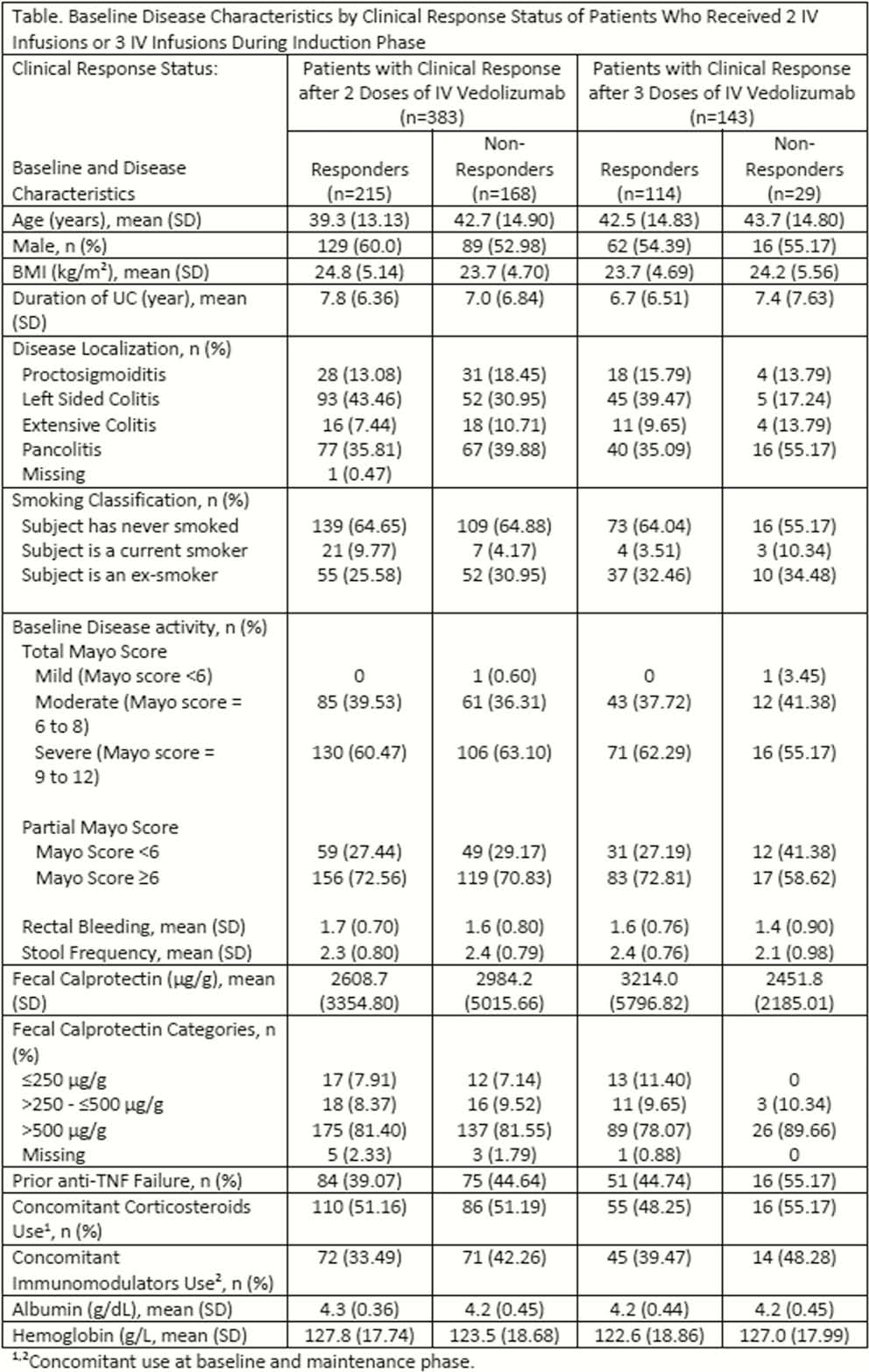P403 Post hoc examination of VISIBLE 1 data for baseline predictors of response to 2 or 3 IV doses of vedolizumab for adults with moderate-to-severe ulcerative colitis
W. Sandborn1, E.V. Loftus Jr2, F. Baert3, J. Jansson4, J. Chen4, N. Candela5, K. Lasch5, K. Kisfalvi4
1Division of Gastroenterology, University of California San Diego, La Jolla, USA, 2Gastroenterology, Mayo Clinic, Rochester, USA, 3Department of Gastroenterology and Hepatology, AZ Delta, Roeselare, Belgium, 4Gastroenterology, Takeda Development Center Americas Inc., Cambridge, USA, 5Gastroenterology, US Medical Office- Takeda Pharmaceuticals U.S.A.- Inc., Deerfield, USA
Background
Vedolizumab (VDZ) is a gut-selective α 4β 7 integrin monoclonal antibody approved for IV administration for moderate to severe ulcerative colitis (UC). The phase 3 VISIBLE 1 study evaluated SC VDZ for UC maintenance therapy. After 2 IV doses, 56.1% patients had a clinical response at week 6; among patients who received a third induction infusion, clinical response rates were 79.7%. In this post hoc analysis, we examined baseline characteristics as predictors of clinical response to IV induction with VDZ.
Methods
In the VISIBLE 1 study (NCT02611830; EudraCT 2015-000480-14), patients (patients) received IV VDZ 300 mg at Weeks 0 and 2. At Week 6, clinical responders were randomised to maintenance SC therapy; nonresponders were given a third IV dose and reassessed at Week 14. As endoscopy was only available at Week 6, the clinical response at Week 6 was defined as ≥3 points and ≥30% reduction in complete Mayo score from Week 0 and at Week 14 as a ≥2 points and ≥25% reduction in partial Mayo score from Week 0. Both definitions also included an accompanying decrease in rectal bleeding subscore ≥1 or absolute subscore ≤1.
Results
Overall, 383 patients received ≥1 dose of IV VDZ. Of these, 56.1% responded at Week 6 after 2 VDZ doses. Of the 143 patients who received 3 IV doses, 79.7% responded at Week 14. No clinically meaningful differences in baseline demographic and disease characteristics were observed between patients who responded after 2 or 3 IV doses (Table). Differences in disease location and partial Mayo score (< or ≥6) were observed between the responders and nonresponders in the 3 IV dose group. Baseline characteristics were evaluated descriptively to assess predictors of clinical response after 2 or 3 IV VDZ doses.

Conclusion
Clinical response was achieved by most patients after either 2 or 3 IV VDZ infusions in the VISIBLE 1 trial. Post hoc analyses revealed no clinically meaningful differences in baseline characteristics or disease characteristics that could serve as predictors of response following 2 or 3 VDZ infusions. Further real-world experience may elucidate potential predictors of response to VDZ.


